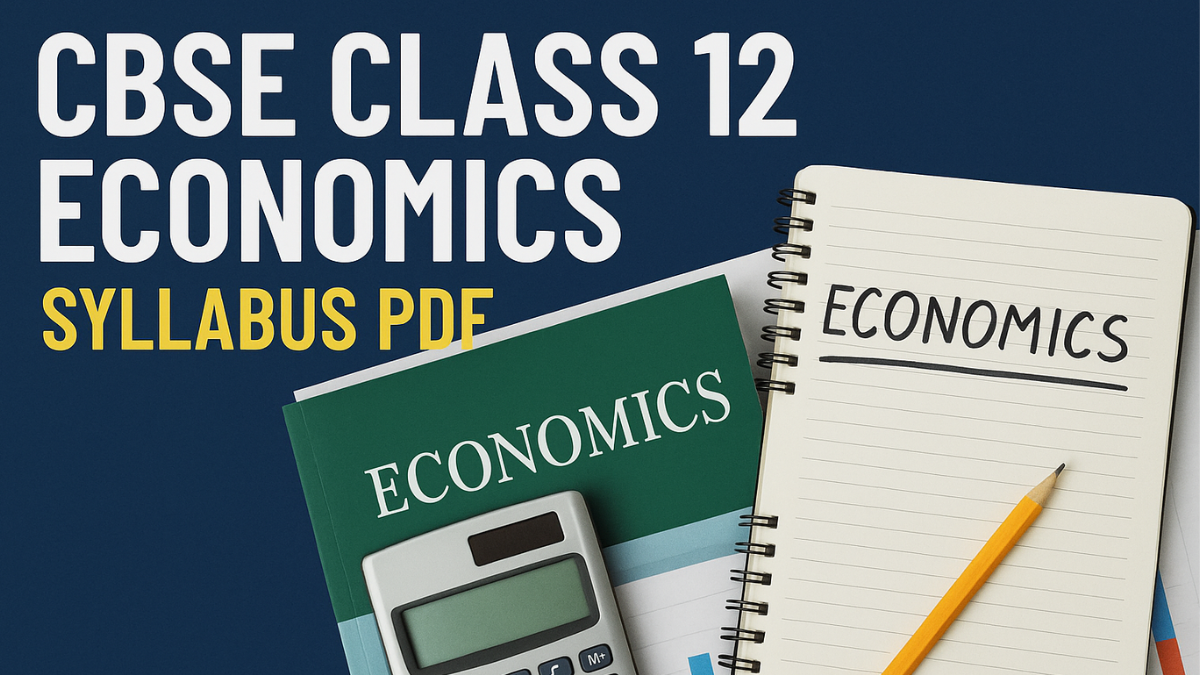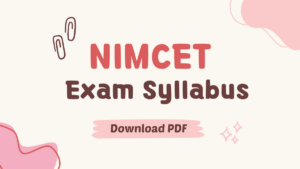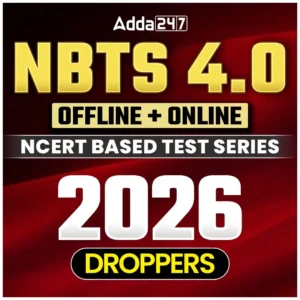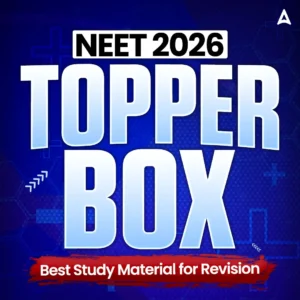The Central Board of Secondary Education has published the updated CBSE Class 12 Economics Syllabus along with all other subjects for the academic year 2025-26. The Syllabus of Class 12 Economics CBSE 2025-26 includes a total eight (08) Units discussing various themes of the Introductory Macroeconomics and Indian economic development. This CBSE Class 12th Economics Syllabus 2025 26 serves as an important framework for both students and teachers. It explains the course format, material organisation, and chapter weightage for the impending 2026 board exams. Access to the most recent CBSE Class 12 Economics Syllabus 2025 26 is available in free PDF format on the official CBSE Academic website (cbseacademic.nic.in) for Free download.
CBSE Class 12 Economics Syllabus 2025-26
Understanding the CBSE Class 12 Economics syllabus 2025 26 is very beneficial as it provides students with an overview of the topics they should concentrate on and the best way to prepare for their board exams. They understand exactly what subjects like macroeconomics and microeconomics cover, so they don’t feel confused or overwhelmed. It covers standard topics like consumer behaviour and market dynamics as well as more general concepts like national income, banking, government spending plans, and international trade. Students who comprehend the Syllabus of Economics Class 12 CBSE 2025-26 chapter wise well are better able to manage their time, focus on the important things, and prepare according to the exam’s marking guidelines, which increases their chances of receiving a high score.
Class 12 Economics Exam – Marks distribution
The CBSE Coducts the class 12th economics exam for a total of 100 marks, which is divided into two section, The Theroy Exam is held for 80 marks where as the project work for 20 marks. The Class 12th Question paper is held for three hours and students need to answer all the questions following instructions. For the better understanding of the exam pattern, students may refer the CBSE Class 12 Economics Previous year paper and official sample paper recetly shared by the board, In the below table a complete Class 12 Economics Syllabus CBSE 2025-26 chapter wise marks distribution.
| Section | Topic | Marks |
| Theory | 80 | |
| Duration | 3 Hours | |
| Project | 20 | |
|
Part A: Introductory Macroeconomics
|
||
| National Income and Related Aggregates | 10 | |
| Money and Banking | 6 | |
| Determination of Income and Employment | 12 | |
| Government Budget and the Economy | 6 | |
| Balance of Payments | 6 | |
| Total Part A | 40 | |
|
Part B: Indian Economic Development
|
||
| Development Experience (1947-90) and Economic Reforms since 1991 | 12 | |
| Current Challenges facing Indian Economy | 20 | |
| Development Experience of India – A Comparison with Neighbours | 8 | |
| Total Part B | 40 | |
|
Theory Paper (Part A + Part B)
|
80 | |
| Part C: Project Work | 20 |
CBSE Class 12 Economics Syllabus 2025-26 PDF Download Link
For a smooth and organized preparation, students should print the Class 12 Economics CBSE 2025–26 syllabus chapter-wise and keep it visible on their study table. This helps in keeping track of all topics and ensures nothing is missed while studying. The CBSE Class 12 Economics syllabus PDF is easily available for download from the official CBSE Academic website. You can also use the direct link provided on this page to get it instantly. Having the syllabus at hand not only guides your daily study routine but also makes exam preparation more focused and stress-free, helping you plan better.
Chapter-Wise Syllabus For Economics Class 12 CBSE 2025-26
The economics class 12 syllabus CBSE 2025 26 is broadly divided into two section namely Part A: Introductory Macroeconomics whereas part B: Indian economic development. Each Section is again classified into several units dicussing various topics of economy. Below the complete detailed breakdown of the Syllabus of Economics Class 12 CBSE 2025-26 chapter wise is given below.
Part A: Introductory Macroeconomics
Unit 1: National Income and Related Aggregates
- What is Macroeconomics?
- Basic concepts in macroeconomics: consumption goods, capital goods, final goods, intermediate goods; stocks and flows; gross investment and depreciation.
- Circular flow of income (two sector model); Methods of calculating National Income –
- Value Added or Product method, Expenditure method, Income method.
- Aggregates related to National Income:
- Gross National Product (GNP), Net National Product (NNP), Gross Domestic Product (GDP) and Net Domestic Product (NDP) – at market price, at factor cost; Real and Nominal GDP,GDP Deflator, GDP and Welfare
Unit 2: Money and Banking
- Money – meaning and functions, supply of money – Currency held by the public and net demand deposits held by commercial banks.
- Money creation by the commercial banking system.
- Central bank and its functions (example of the Reserve Bank of India): Bank of issue, Govt. Bank, Banker’s Bank, Control of Credit through Bank Rate, Cash Reserve Ratio (CRR), Statutory Liquidity Ratio (SLR), Repo Rate and Reverse Repo Rate, Open
Market Operations, Margin requirement.
Unit 3: Determination of Income and Employment
- Aggregate demand and its components.
- Propensity to consume and propensity to save (average and marginal).
- Short-run equilibrium output; investment multiplier and its mechanism.
- Meaning of full employment and involuntary unemployment.
- Problems of excess demand and deficient demand; measures to correct them – changes in government spending, taxes and money supply.
Unit 4: Government Budget and the Economy
- Government budget – meaning, objectives and components.
- Classification of receipts – revenue receipts and capital receipts;
- Classification of expenditure – revenue expenditure and capital expenditure.
- Balanced, Surplus and Deficit Budget – measures of government deficit.
Unit 5: Balance of Payments
- Balance of payments account – meaning and components;
- Balance of payments – Surplus and Deficit
- Foreign exchange rate – meaning of fixed and flexible rates and managed floating.
- Determination of exchange rate in a free market, Merits and demerits of flexible and fixed exchange rate.
- Managed Floating exchange rate system
Part B: Indian Economic Development
Unit 6: Development Experience (1947-90) and Economic Reforms since 1991:
- A brief introduction of the state of Indian economy on the eve of independence.
- Indian economic system and common goals of Five Year Plans.
- Main features, problems and policies of agriculture (institutional aspects and new agricultural strategy), industry (IPR 1956; SSI – role & importance) and foreign trade.
- Economic Reforms since 1991:
- Features and appraisals of liberalisation, globalisation and privatisation (LPG policy);
- Concepts of demonetization and GST
Unit 7: Current challenges facing Indian Economy
- Human Capital Formation: How people become resource; Role of human capital in economic development; Growth of Education Sector in India
- Rural development: Key issues – credit and marketing – role of cooperatives; agricultural diversification; alternative farming – organic farming
- Employment: Growth and changes in work force participation rate in formal and informal sectors; problems and policies
- Sustainable Economic Development: Meaning, Effects of Economic Development on Resources and Environment, including global warming
Unit 8: Development Experience of India:
- A comparison with neighbours
- India and Pakistan
- India and China
- Issues: economic growth, population, sectoral development and other Human Development Indicators
Class 12th Economics Project Syllabus
The objectives of the project work are to enable learners to probe deeper into the theoretical concepts learnt in class XII. It analyses and evaluates real-world economic scenarios using theoretical constructs and arguments. Take a look at the Suggestive List of Projects for class 12th economics
- Micro and Small Scale Industries • Food Supply Channel in India
- Contemporary Employment situation in India • Disinvestment policy of the government
- Goods and Services Tax Act and its Impact on GDP
- Health Expenditure (of any state)
- Human Development Index • Inclusive Growth Strategy
- Self-help group • Trends in Credit availability in India
- Monetary Policy Committee and its functions • Role of RBI in Control of Credit
- Government Budget & its Components • Trends in budgetary condition of India
- Exchange Rate determination – Methods and Techniques
- Currency War – reasons and repercussions
- Livestock – Backbone of Rural India • Alternate fuel – types and importance
- Sarva Shiksha Abhiyan – Cost Ratio Benefits • Golden Quadrilateral- Cost ratio benefit
- Minimum Support Prices • Relation between Stock Price Index and Economic Health of a Nation
- Waste Management in India – Need of the hour
- Minimum Wage Rate – Approach and Application
Digital India- Step towards the future • Rain Water Harvesting – A solution to water crisis - Vertical Farming – An alternate way • Silk Route- Revival of the past
- Make in India – The way ahead • Bumper Production- Boon or Bane for the farmer
- Rise of Concrete Jungle- Trend Analysis • Organic Farming – Back to Nature
- Aatmanirbhar Bharat • e-Rupee (e- ₹)
- Sri Lanka’s Economic Crisis • Sustainable Development Goals (SDGs)
- Environmental Crisis • Comparative Study of Economies (Maximum three economies)
- New Education Policy (NEP) 2020: A Promise for a New Education System
- G-20: Inclusive and Action-Oriented
- Amrit Kaal: Empowered and Inclusive Economy
- Cashless Economy
- Any other newspaper article and its evaluation on basis of economic principles
- Any other topic
CBSE Class 12 Economics Books
To complete the syllabus, you need to wisely select the pescribed books which desinged in line with it. Below is the best refrenece books for the CBSE Class 12 Economics Syllabus:
- Statistics for Economics, NCERT
- Indian Economic Development, NCERT
- Introductory Microeconomics, NCERT
- Macroeconomics, NCERT
- Supplementary Reading Material in Economics, CBSE










 CUET Commerce Syllabus 2026, Download Su...
CUET Commerce Syllabus 2026, Download Su...
 CUET PG Hindi Syllabus 2026, Download CU...
CUET PG Hindi Syllabus 2026, Download CU...
 NIMCET Syllabus 2026, Download Subject-w...
NIMCET Syllabus 2026, Download Subject-w...













